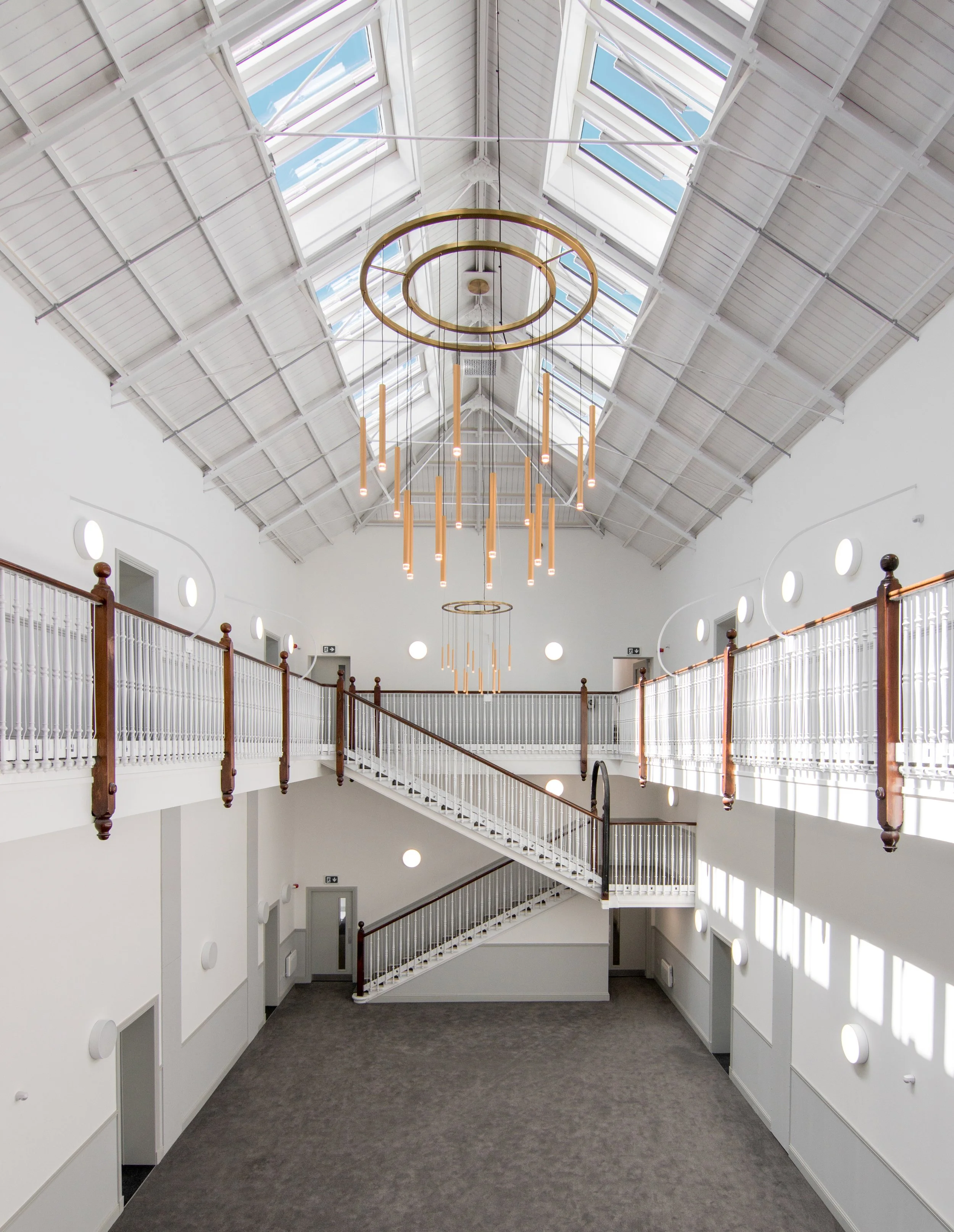How to safely navigate Retrofit
By Peter Edwards, architect at Holmes Miller
Do you know your EnerPHit from your CarbonLite Retrofit? And if someone mentioned PHPP, would you know what they meant? If not, I don’t blame you – the language of retrofit can be rather baffling.
The UK has some onerous net zero targets to meet, so retrofitting is starting to take off in a big way and will become a significant element of the construction landscape over the coming decades. It’s estimated that over a million homes and many thousands of public and commercial buildings will need to be retrofitted annually if the country is to meet its climate goals.
Whether that involves minor alterations such as installing new windows or replacing a gas boiler with a heat pump, or major changes to the fabric of a building to improve its energy efficiency, few structures will be unaffected.
Planning policy may soon reflect the move towards retrofit; the City of Westminster is currently consulting on adopting a retrofit-first approach that could mean developers would have to explore the option to retrofit before demolishing buildings and building new. If adopted, other areas are likely to follow suit.
It’s essential, therefore, that retrofit – and all it’s accompanying technical jargon - becomes more widely understood within the built environment sector.
When we talk to potential clients, we find some are more knowledgeable than others. Some might understand what retrofit is, but need help understanding what they need to do to achieve it. Because of the complexities involved, and the numerous standards available, it can all seem a bit daunting.
Knowledgeable consultants can help clients navigate the retrofit minefield by guiding them through the different routes, and advising them on what option works best for their specific project.
While every retrofit project is different, making a one-size-fits-all approach impossible, there are several steps we recommend.
1. Understand the scope of the project. If an organisation is looking to retrofit its wider estate rather than just one or two buildings, it could be worth considering an approach based on building typology . This is where your adviser comes up with general strategies for groups of buildings that are similar, such as blocks of flats, terraced homes, schools or offices.
We used this approach recently when a local authority asked us to examine how it can decarbonise all its primary schools, of varying age and construction. We identified seven typical typologies, and also worked out how four classrooms at a time can be retrofitted, so schools don’t need to close during works and multiple schools can be upgraded simultaneously.
2. Organise a thorough investigation of the condition of the existing building(s). This could include calculating u-values, carrying out air tightness tests or thermography assessments, which are key to identifying risks and opportunities.
Not investing in the right assessments at the outset can leave you with problems later on, such as moisture issues if you are mix and matching different types of construction, and where ventilation and air tightness need to be carefully balanced.
3. Create a whole building retrofit plan. Holmes Miller uses the Passivhaus Planning Package (PHPP) as an energy modelling tool for every project, not just ones aiming for Passivhaus - which can be challenging for a retrofit project.
After collecting all the information we can about the building, we feed this in into PHPP. The findings of the PHPP are vital in informing a step-by-step retrofit plan, and it also provides lots of useful stats on predicted future energy use and estimated upfront and whole life carbon. It can also verify the measures needed to achieve various standards, such as EnerPHit and AECB CarbonLite.
We can help you understand different benchmarks and standards and select the right one for your project, which is ambitious without being unrealistic. The route we recommend usually depends on a client’s budget, but using PHPP means we can assess different options, and keep the door open for better standards with third party verification. This ensures quality for the client.
4. Consider phasing. If costs or potential disruption are stopping you from doing everything in your retrofit plan at once, consider a step-by-step approach that spreads both costs and disturbance in a more manageable way. Upgrading glazing or improving insulation could be good first steps. It’s important, though, to consider all your planned measures together as a package – for example, low carbon heat options rely on a more efficient building envelope being in place first, and you can’t improve airtightness without adequate ventilation.
5. Aim for EnerPHit. While most people are familiar with Passivhaus, fewer have heard of its equivalent standard for existing buildings, EnerPHit. This is the gold standard for energy efficiency in retrofit projects, and even if you don’t reach it, it’s worth modelling the building to help set and assess targets for your upgrade. We can talk you through the measures your project will need to achieve this.
EnerPHit can be challenging to achieve, due to onerous requirements for insulation levels and air tightness. If EnerPHit is not possible, we’d recommend aiming for the CarbonLite standard by AECB – a more pragmatic approach to meeting net zero aspirations.
6. Appoint a certifier to ensure quality assurance. If you are aiming for EnerPHit or AECB standards, we would strongly recommend getting an independent certifier on board early, to ensure quality and ease of development. Doing all the hard work to achieve these standards without achieving certification seems like a monumental waste of effort. Some clients have concerns about short-term costs associated with certification, but taking a longer-term view, a certifier ensures quality on site is kept to a high standard. This in turn ensures the proposed energy savings predicted by the PHPP can be achieved.
7. Follow PAS 2035/PAS2038 at a minimum
Under PAS 2030, the ‘umbrella’ standard for retrofit, there are guidelines for domestic (PAS 2035) and non-domestic (PAS 2038) projects to aim for in terms of energy performance. These guidelines lay out a logical sequence for retrofit projects to follow, and also explain the different roles in the retrofit process, such as retrofit designers, co-ordinators, assessors and advisors. They also specify what qualifications these people must have to practice.
We’d recommend any retrofit project should follow PAS 2035/2038 as a minimum, as they are verified standards which ensure quality and minimise risk of a performance gap. Compliance with PAS 2035/2038 is also a requirement for any projects that have government funding.
As so many technical issues come together when you are considering a retrofit project, it can be beneficial if your retrofit consultant can offer a range of expertise in one place, such as coordination, design and technical assessment.
With that in mind, Holmes Miller formed a joint venture – known as Sussed Sustainability – to allow us to offer our clients a broader range of retrofit skills, expertise and sector knowledge, from project architects and leading technical analysts to building assessors and conservation architects.
Yes, retrofit can be daunting, but one thing is certain - we must embrace it, not just for our planet but also to reduce fuel poverty and improve the comfort and wellbeing of every building user. Expert help and support is out there, so lean on it if you need to.


